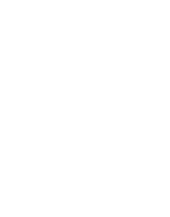 |
 |
 |

|
Coll-Barreu Architectos
Health Department headquarters Bilbao, Spain
photo: Aleix Bagué
|
|
 |
HEALTH DEPARTMENT HEADQUARTERS
-administrative and Business Center of Bilbao
Coll-Barreu Architectos
The new Basque Health Department headquarters is located at the last site that still remained unbuilt on the administrative and Business Center of Bilbao. Up to now, the institution was suffering the spread of its staff in several buildings, hardly recognizable by citizens, away from each other and uncomfortable for both users and technical services. The aim of the new building is bringing together staff in a recognizable place, in order to increase the efficiency of the service and identify easily the corporation. The project at the same time involves both economic and property profits.
|

|
Posted 6 June 2013
|
Share this:
|
|
|
|
|
|
|
|
|
|
Health Department headquarters Bilbao, Spain
The new Basque Health Department headquarters is located at the last site that still remained unbuilt on the administrative and Business Center of Bilbao. Up to now, the institution was suffering the spread of its staff in several buildings, hardly recognizable by citizens, away from each other and uncomfortable for both users and technical services. The aim of the new building is bringing together staff in a recognizable place, in order to increase the efficiency of the service and identify easily the corporation. The project at the same time involves both economic and property profits.
The site is located in the crossroad of two important streets of the Ensanche, designed in 1862. The restrictive city rules compel to repeat the shape of the neighboring walls, reducing penthouses according to a curved directive, chamfering the corner and building a tower on it.
The folded façade generates multiple visual directions from inside to the streets bellow, and also from the highest floors to the landscape that surrounds the city, a highly effective mechanism for the incorporation of urban vitality inside the building.
The double façade solves not only all the mentioned urban requirements but also those concerning energetic, fire-resistant and acoustic insulation. This climatic improvement enables the elimination of the conventional air-conditioning installation as well as the false ceiling. Thus, the sound produced by the building is reduced, air recirculation in workplaces disappears, with a significant increase of health conditions, and the volume occupied per floor is also reduced, saving resources consumed by the construction.
The façade responds to the investigation launched in the previous projects, which considers the wrapper as a system. The construction techniques, the operation of the building, the energy exchange, the city and also the very fact, the desire to be... take part in the system definition, but never the elevation or the composition. The system must provide a valid response to the different situations generated in the façade. Instead of merely set the building on the one hand and shaping the urban space on the other, the façade system should become a social vehicle.
The glass used: Outside facade: Laminated glass made up of a sheet of glass of 6mm, a sheet of PVB and a sheet of glass with sun control SUN GUARD LE of 6 mm, made by Guardian Glass and Inside facade: Double glazing made up of an exterior sheet of float glass of 8 mm, separated sealed air chamber of 16mm and an interior sheet of laminated glass type LAMIGLASS 5+5.1 with Low-E 1,1 Neutralite made by Guardian Glass.
The building concentrates services and communications in a vertical spine attached to the longest party hedge and generates seven open floors assigned for offices. Above this, there are two floors for local representative and institutional use. The workspace benefits of the permeable, passable and livable volume of the building. The board hall takes up the double height of the tower. The auditorium, its foyer and its appendages are situated in the first basement. Further below there are two parking floors and one fourth level for archives. The car lifts allow access to all the basement levels.
The project emphasizes the place to sit on the threshold, at the doorway of a house, looking down the road and the back into the home.
More information: www.coll-barreu-arquitectos.com
Basque Health Department Headquarters in Bilbao
status
Built
client
Basque Government
site
Bilbao (Spain)
architects
COLL-BARREU ARQUITECTOS
Juan Coll-Barreu
Daniel Gutiérrez Zarza
collaborators
Fernando de la Maza
Jorge Bilbao Barinaga
Pablo Castro
Gorka García
Borja Aróstegui
date of project
January 2003-March 2004
construction date
December 2004-February 2008
total floor area
8.802,05 m2
budget
13.090.572,37 €
consultants
COLL-BARREU ARQUITECTOS - facades
COLL-BARREU ARQUITECTOS Víctor Mora Peña - quantity surveyor
Mintegia y Bilbao - structures
Indotec - electrical and mechanical design
Typsa - electrical and mechanical supervision
Tesysal - safety
photography
Aleix Bagué
awards
First Prize in ideas competition
Nominated to the European Union Prize for Contemporary Architecture-Mies van der Rohe Award
Honored at the 10th Spanish Biennial of Architecture and Urbanism
|
|
|
|
|
|
|


